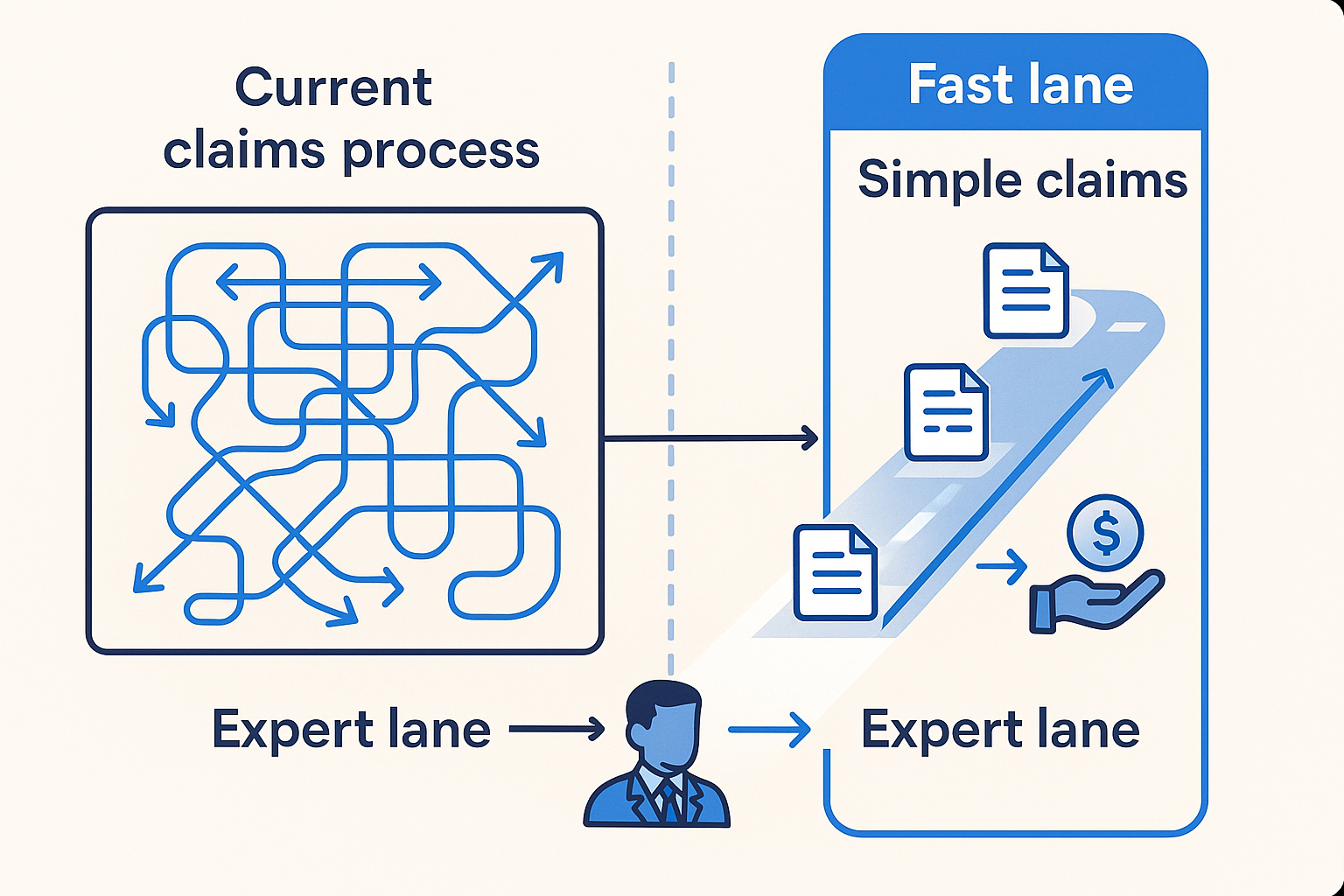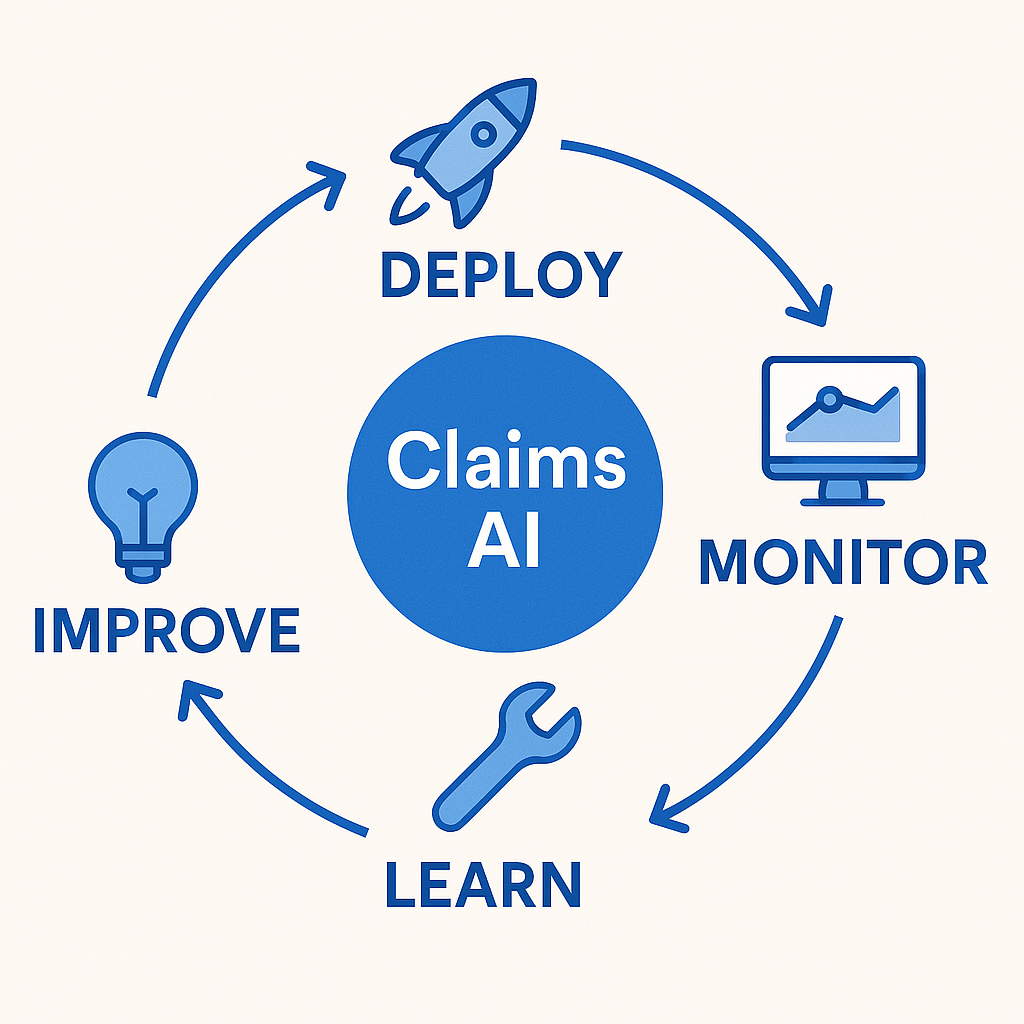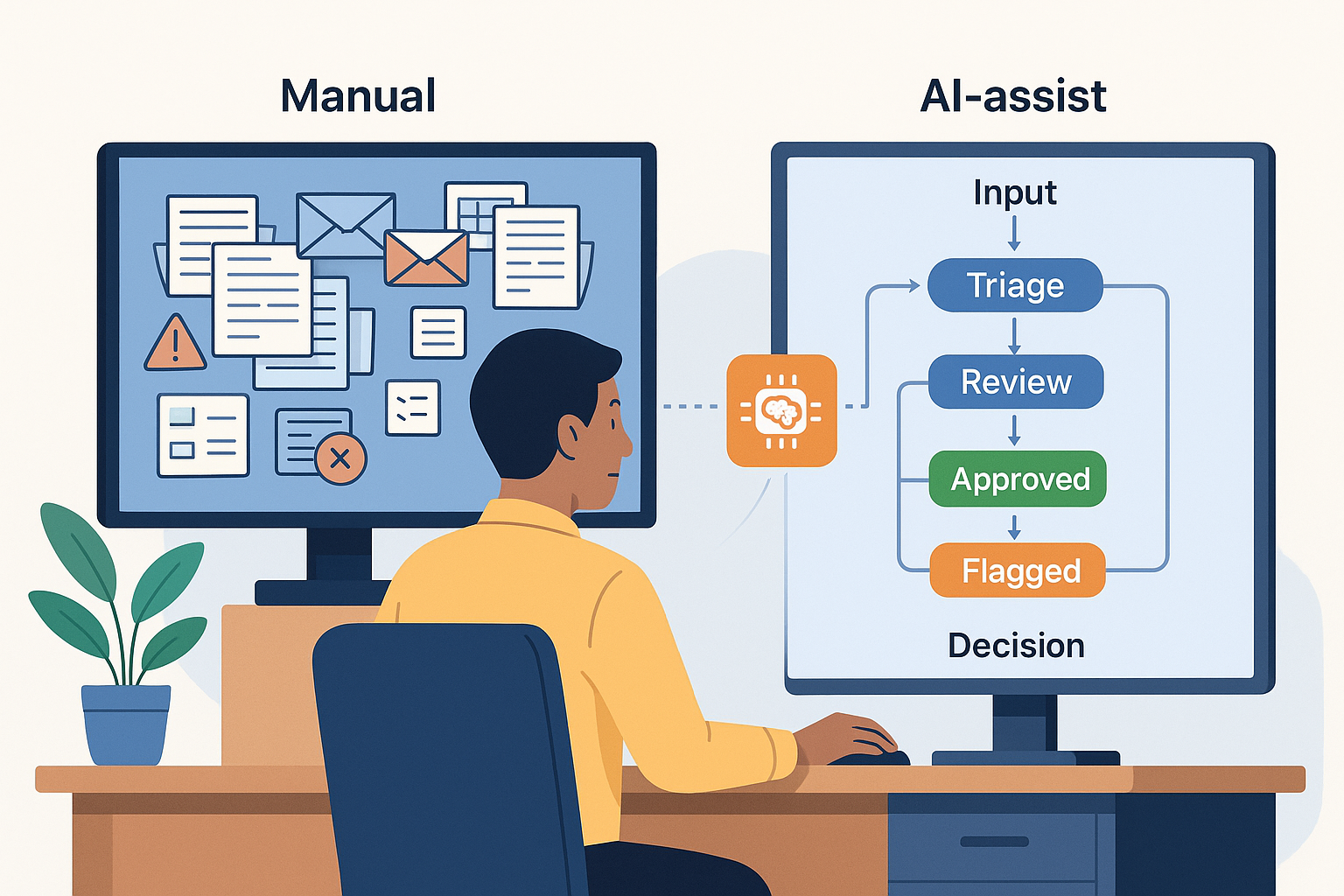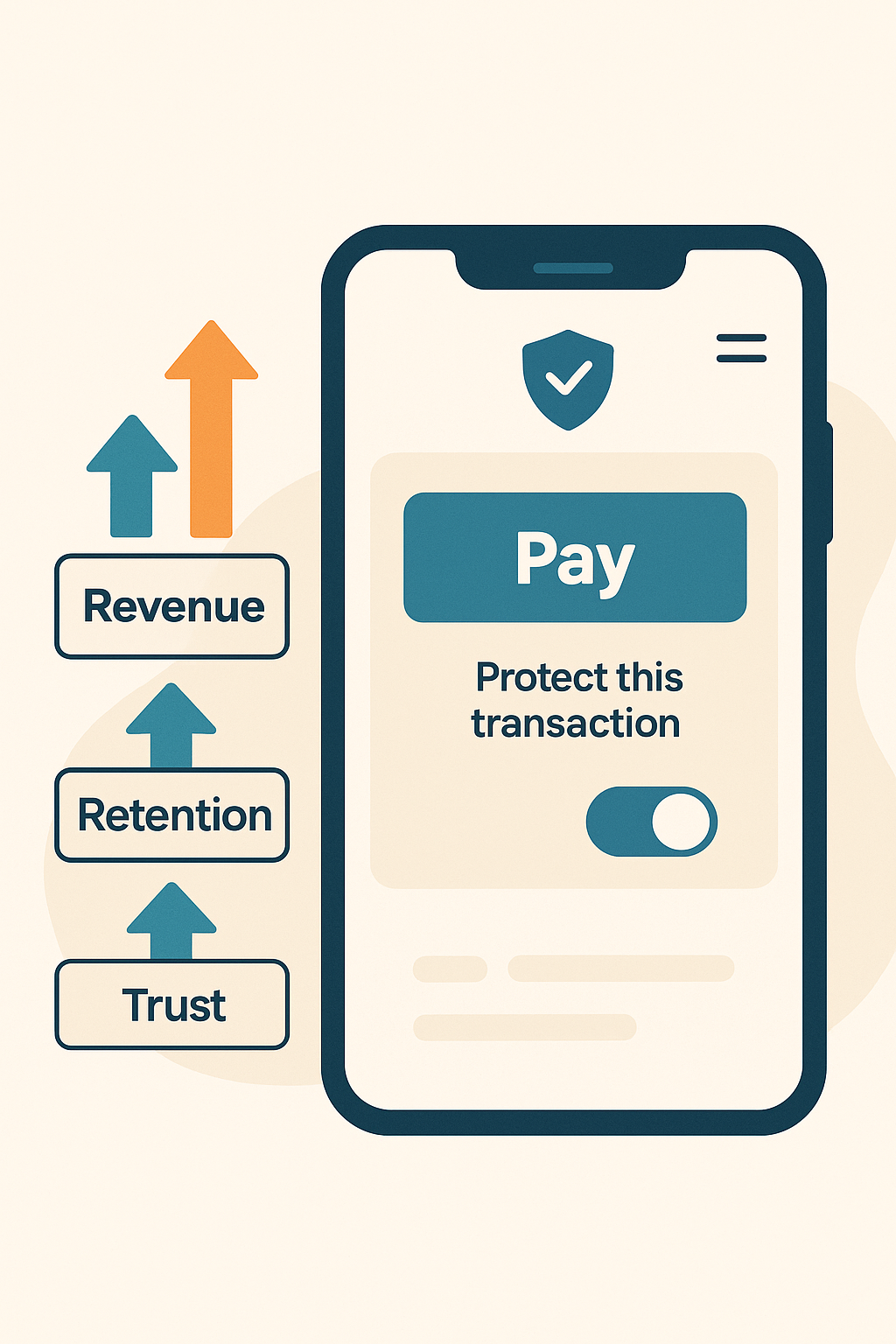5 Common Mistakes in AI-Powered Claims Automation (and How to Avoid Them)
AI in claims has moved from "nice-to-have" to "board-level priority." Everyone wants faster decisions, lower leakage, and better customer experiences.
But there's a gap between deploying AI and actually seeing results.
We've seen insurers across Africa, MENA, and beyond rush into "AI-powered claims" only to end up with frustrated adjusters who don't trust the model, customers waiting just as long for decisions, and a pile of POCs that never reach production.
The good news? Most failures come down to five avoidable mistakes.
Mistake 1: Treating AI as "Magic" Instead of a Business Tool
Many AI projects start with vague goals like "Use AI in claims" or "Add a chatbot." There's excitement, but no clear definition of success.
Symptoms:
- Multiple AI pilots with no clear owner or KPI
- Confusion over where AI should sit in the claims journey
- Teams disagreeing on whether the project is "working"
How to avoid it:
Start with concrete business outcomes, not algorithms:
- "Reduce handling time for simple motor claims from 5 days to 24 hours"
- "Increase straight-through-processing on low-value health claims to 40%+"
- "Cut manual data entry at FNOL by 60%"
Then work backwards:
- Map your claims journey: FNOL → Triage → Assessment → Investigation → Settlement
- Identify bottlenecks: Where are delays, rework, leakage, or customer drop-offs?
- Choose AI use cases that directly impact those spots: Document understanding at FNOL, automated routing, fraud risk scoring, smart checklists for adjusters
With Curacel, we start with a short "claims automation blueprint" workshop, aligning stakeholders on high-impact use cases before writing a line of code.
Mistake 2: Feeding AI Poor or Inconsistent Data
AI models are only as good as the data they learn from. If your claims data is full of missing fields, inconsistent labels, or unstructured notes, your model will struggle.

AI models thrive better with cleaned data
Typical issues:
- Same claim type coded differently across products or systems
- Important information locked in PDFs, images, or emails
- No "ground truth" labels for what was a good/bad decision or fraudulent
How to avoid it:
Think "data readiness" before "model readiness":
- Standardize key fields: Claim type, cause, severity, outcome, fraud flags
- Capture clean labels going forward: When an adjuster overturns an AI suggestion, capture why
- Unlock documents: Use OCR and document understanding to turn images into structured data
- Start narrow: Better to have clean data for one use case than messy data for everything
Curacel's platform includes document understanding, data validation, and normalization out of the box, so you get better training data without rebuilding your core system.
Mistake 3: Automating a Broken Process
If your process is already inconsistent, overly complex, or not customer-centric, automating it just means you're making bad decisions faster.

Your claims process has to be seamless
Red flags:
- Many non-standard exceptions and manual workarounds
- Multiple handoffs between teams for simple claims
- Different decisions for similar cases depending on who handles them
How to avoid it:
Use AI as a chance to simplify and standardize:
Segment your claims:
- Simple, low-value, low-risk → Aim for high straight-through-processing
- Complex, high-risk → Keep human-led, AI-assisted
Design the "ideal" path for each segment:
- What information do you really need up front?
- Which checks are mandatory vs. nice-to-have?
Automate the clean path first:
- Focus initial AI use cases on the simple segment where rules are clear and exceptions are rare
Curacel helps insurers design "fast lanes" for simple claims, stripping out unnecessary steps so automation delights customers rather than speeding up a bad process.
Mistake 4: Removing Humans Instead of Empowering Them
"Fully automated claims" sounds attractive, but for most insurers it's not realistic or desirable. The fastest way to kill an AI project is forcing adjusters to accept model outputs with no explanation or removing expert judgment from complex cases.

Don't remove humans from the loop
How to avoid it:
Design for human-in-the-loop from day one:
Make AI suggestions, not mandates – Let AI propose routing, checks, or settlement ranges while adjusters make the final call
Show your work – Surface the key signals behind a suggestion: similar past claims, missing documents, fraud risk indicators
Capture human feedback – When an adjuster overrides the AI, ask them to choose a reason. This becomes training data for improvements
Set clear guardrails – For example: "Claims above $X or with fraud score above Y always require human review"
Curacel's platform is built around explainable AI and collaborative workflows, so adjusters see AI as a colleague, not a black box.
Mistake 5: Treating AI as a One-Off Project, Not a Living System
Many insurers launch an AI model, celebrate... and then largely ignore it. Six months later, claim patterns and fraud tactics have shifted, but the model hasn't. Performance degrades quietly.

Claims loop
Common pitfalls:
- No clear owner for model performance after go-live
- No monitoring of drift, bias, or changing patterns
- No regular retraining or rules updates
- No feedback loop from claims teams
How to avoid it:
Treat AI like a living system:
Define ownership – Make it clear who monitors, retrains, and improves the AI
Monitor key metrics:
- Accuracy vs. human decisions
- Straight-through-processing rate
- Time-to-decision
- Override rates
Schedule regular reviews – Monthly or quarterly "AI performance reviews" to refine rules and plan retraining
Invest in tooling – Use a platform that makes it easy to log predictions, monitor drift, and retrain models
Curacel provides ongoing monitoring, model management, and expert support so your claims automation keeps improving as your business evolves.
Skip the Learning Curve
If you recognize these mistakes in your roadmap, you're not alone. Most insurers go through a painful learning curve when building AI-powered claims automation from scratch.

Solve your problems with Curacel
The big traps:
- No clear business problem or owner
- Poor or inconsistent data
- Automating a broken process
- Cutting humans out instead of empowering them
- Treating AI as a project, not a living system
That's why insurers across emerging markets partner with Curacel as their AI infrastructure layer for claims, combining battle-tested AI modules, insurance-specific workflows, and expert support to help you avoid common pitfalls and get to value faster.
Ready to Stress-Test Your Claims Automation Plans?
Book a free Curacel Claims Demo
In a short session, we can:
- Review your current claims journey and data readiness
- Identify 1-2 "quick win" automation opportunities
- Highlight risks and gaps in your existing or planned AI setup
You'll walk away with a practical roadmap and a clear view of whether partnering with Curacel is the right move for you.
Abonnez-vous à notre newsletter pour recevoir du contenu hebdomadaire


























.svg)







